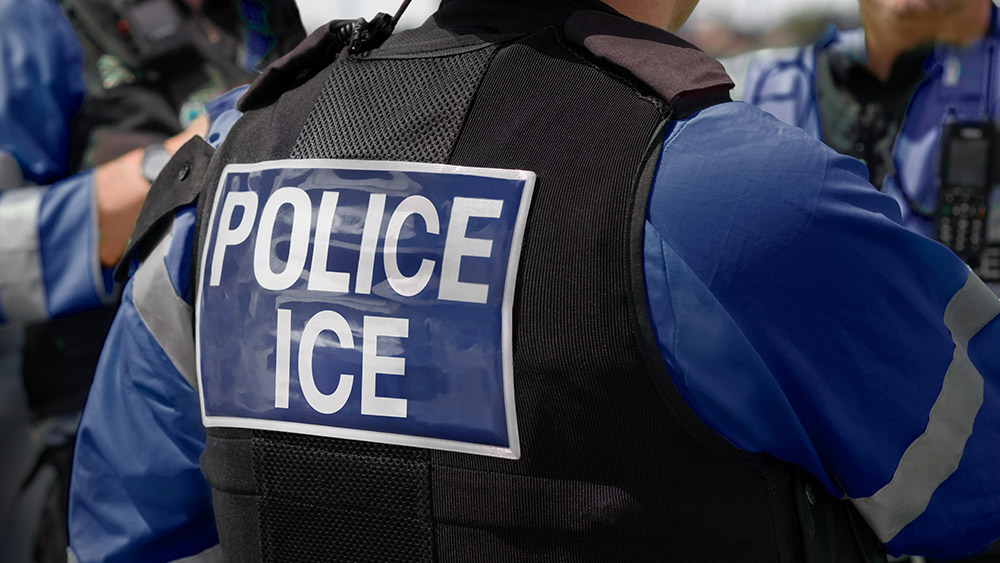15 Items you should have in your emergency bag
By divinaramirez // 2021-07-29
Tweet
Share
Copy

Disasters often strike without warning, so it's important to be prepared. Having an emergency bag you can take with you when evacuating can mean the difference between life and death in emergency situations. Ideally, your emergency bag should have supplies to protect you from the elements and meet health and first aid needs.
Here are 15 things you should pack in your emergency bag: (h/t to PreparedForThat.com)
- Water – Power and water will be the first utilities to go out in the event of a major disaster, so make sure to pack plenty of bottled water. Ideally, you should store 20 gallons of potable water per person in your household. Don't forget to include water for your pets, if any.
- Food – Pack nonperishable foods, such as dried and canned beans, nut butters, nuts, seeds, grains, jerky and dried fruits and vegetables. Rotate your supplies every six months to keep food fresh.
- Firestarter kit – Fire is essential for keeping warm, cooking and cleaning water, so prepare a firestarter kit. It should include lighters, waterproof matches, a firesteel rod and tinder.
- Flashlights and lanterns – Pack light sources like flashlights and lanterns. These are safer to use at night than candles. With devices dedicated to lighting, you can save your matches for heating and cooking. Don't forget to pack extra batteries.
- Tents – You can always build a makeshift shelter in the wild using large tarps, but you can save time and effort by packing tents you can set up in minutes.
- Communication devices – Entire cities can end up without power when disaster strikes. You'll want a radio to receive information about the weather or evacuation alerts. You should also pack two-way radios so that you can communicate with your family if someone gets separated while evacuating.
- Heating and cooling devices – You can die of either extreme cold or extreme heat in the wild. Luckily, there are now various portable devices for heating and cooling on the market. These include self-heating blankets, portable heaters, and battery-operated electric fans.
- Hand tools – Hand tools allow you to repair equipment and build a shelter in the wild. In a pinch, hand tools can even double as self-defense weapons if your firearms aren't within reach.
- Self-defense weapons – When SHTF, societal collapse is a possibility. That means you may encounter looters and intruders intent on stealing your supplies, so make sure to pack self-defense weapons like tasers and firearms in your emergency bag.
- First-aid kit – Injuries can happen during disasters, so it's important to prepare a basic first-aid kit. This should include sterile gloves, gauze, soap, burn ointment, bandages, tourniquets and tweezers. (Related: Safety first: Tips for stocking your First Aid kit before SHTF.)
- Navigation devices – Even with an evacuation plan, you never know where an emergency will take you. It pays to know how to find your way in unfamiliar territory by using a compass or a Global Positioning System (GPS) device.
- Clothes – Pack at least one full change of clothes for each person. That includes a pair of socks, underwear, shirt and pants.
- Extra cash – Pack extra cash so that you can easily replenish supplies like food and bottled water.
- Important documents – Make copies of important documents, such as birth certificates, passports, driver's licenses and property records. Keep them in water- or fireproof pouches and add them to your emergency bag.
- Emergency information notebook – Phone lines could go down when disaster strikes. Nevertheless, you never know when you'll need to get in touch with individuals or institutions for help. Prepare a small notebook with a list of numbers for hospitals, fire stations or police outposts.
Tweet
Share
Copy
Tagged Under:
collapse preparedness prepping disaster survival emergency prepper off grid chaos gear emergency kit survival essentials
You Might Also Like
Prepper recipes: How to make long-lasting lemon energy bars
By Zoey Sky // Share
Mold, begone: 5 Non-toxic DIY mold cleaner recipes
By Virgilio Marin // Share
SHTF essentials: How to build a DIY gunshot wound first aid kit
By Zoey Sky // Share
Prepper hacks: 8 Ways to keep your homestead clean without water
By Divina Ramirez // Share
SHTF pest control hacks for lice, mosquitoes and ticks
By Divina Ramirez // Share
5 Tips for successful raised bed gardening
By Divina Ramirez // Share
Recent News
ICE agent shoots Minneapolis woman, sparking outrage and political firestorm
By ramontomeydw // Share
Asia arms up: Military spending surges as regional tensions reach boiling point
By isabelle // Share
Daily activity makes your brain younger
By willowt // Share











